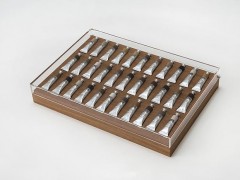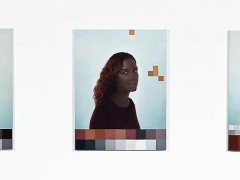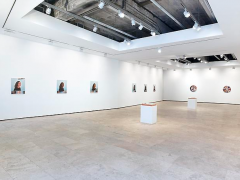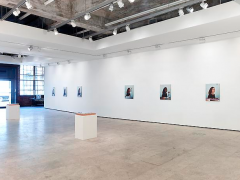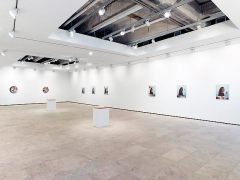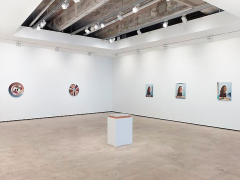Adriana Varejão – Polvo
24.02 – 21.06 / 2014
Lehmann Maupin, New York
For her fifth exhibition with the gallery, Lehmann Maupin is pleased to present a solo exhibition of new works by one of Brazil’s leading artists, Adriana Varejão, opening April 24, 2014. Through painting, sculpture, installation and photography, Varejão addresses themes of colonialism, miscegenation and anthropology in Brazil, one of the most ethnically diverse countries in the world.
Varejão’s newest body of work, Polvo, expands her exploration of miscegenation—the mixture of races—with a series of self-portraits that highlights the spectrum of interracial identity in Brazil, where historically race has assumed a social and cultural function. Varejão often uses the term mestizaje, as it embodies the concept of miscegenation, though indiscriminate of the combination of ethnicities.
Varejão’s influences include the baroque, history and ceramics, as well as art history; she weaves these together to show the impact of the Euro-centric worldview on the New World. Colonial Spanish casta paintings, a 17th and 18th century genre characteristic of New Spain and particularly prevalent in colonial Mexico that sought to document the varieties of interracial mixing in an attempt to classify and frame racial diversity and hybridity throughout a complex caste system, and a 1976 racial census issued by the Brazilian government, served as inspiration for this series. The government survey asked Brazilian citizens to describe their own skin color, resulting in 136 different metaphorical descriptions. From these Varejão selected the most linguistically poetic descriptions, varying from Sapecada (Flirting with Freckles), Café com Leite (Milky Coffee), Burro quando Foge (Faded Fawn) and Queimada de Sol (Sun Kissed), and depicts herself as she envisions with each of these skin tones. The artist groups these works together as triptychs, so that comparisons can be made between the various self-assessments of race.
Varejão also created her own set of oil paints as part of the series, which will be displayed alongside the portraits. Branded by the artist under the name Polvo (meaning “octopus” in Portuguese), each color of flesh-toned paint in the set corresponds with the descriptions from the survey. The logo of the octopus was chosen as its dark-colored ink consists primarily of melanin, the same natural pigmentation found in human hair and skin. The sets will be accompanied by two color wheel paintings depicting the various shades of Polvo oil paints.
Varejão’s first solo museum exhibition in the United States will take place at the Institute of Contemporary Art Boston in November 2014. The exhibition will feature a survey of her work from 1988 to 2014, including paintings from the Polvo series.
This post is also available in: Spanish

 Home
Home
